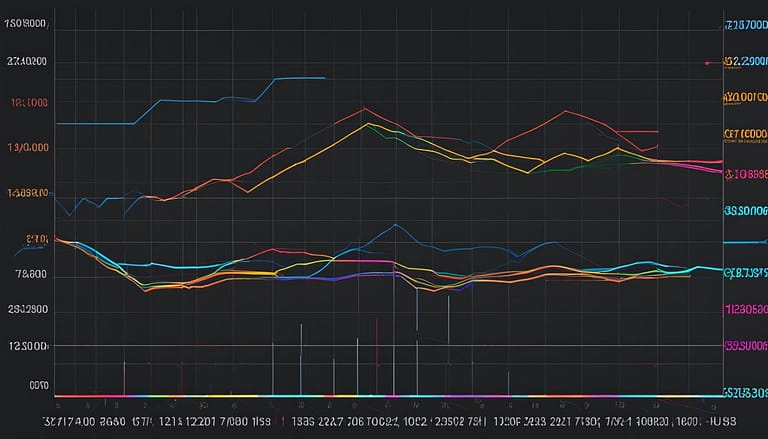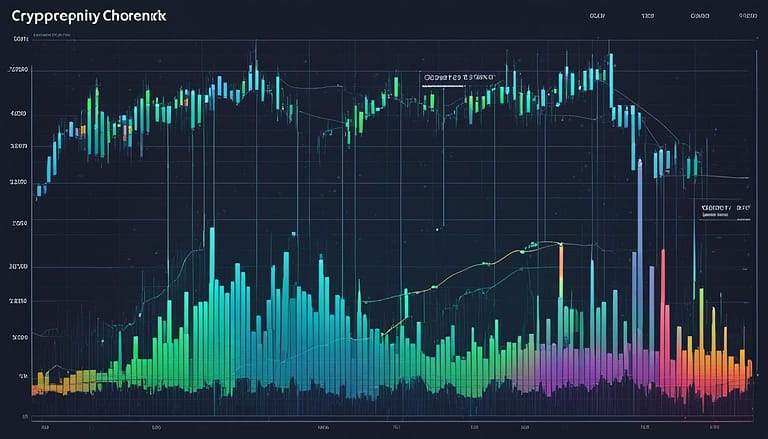Navigating the World of Cryptocurrency Lending and Borrowing
The realm of financial transactions has transcended traditional boundaries, and nowhere is this evolution more evident than in the burgeoning environment of Cryptocurrency Lending and Digital Asset Borrowing. In Canada, a country known for its progressive stance on digital innovations, cryptocurrency holders are discovering lucrative new horizons through the ability to earn Crypto Interest. The fulcrum of these transactions hinges on the seamless operation of various Lending Platforms. These platforms have carved out a niche, offering a secure and transparent conduit for this avant-garde financial exchange.
As digital currencies continue to etch their mark in the financial annals, their promise as vehicles of both investment and liquidity has risen to prominence. With Canada’s cryptocurrency market aligning with global trends, opportunities burgeon for both seasoned investors and prospective borrowers to partake in this digital finance revolution.
Key Takeaways
- The intersection of Cryptocurrency Lending presents financial growth opportunities within Canada’s innovative economy.
- Earning Crypto Interest has emerged as a viable channel for revenue among digital asset holders.
- Centralized and decentralized Lending Platforms play a crucial role in bridging the gap between lenders and borrowers.
- Digital Asset Borrowing provides a pathway to liquidity that allows crypto owners to leverage their portfolios without liquidating their assets.
- The expansion of Canada’s cryptocurrency market signals a bright future for this aspect of digital finance.
The Emergence of Crypto Lending and Its Market Impact
The advent of the Crypto Lending Market not only signifies an interesting era in finance but is also indicative of the shape of things to come in the financial evolution of digital currencies. Distinct from traditional banking systems, this innovation has woven together the capabilities of digital assets and the pioneering fabric of the Web3 revolution, resulting in a groundbreaking financial instrument.
Cryptocurrency Market Growth Projections
Within the fast-paced domain of digital currencies, projections reveal a bullish trend for the global cryptocurrency market, expected to surge to a staggering USD 4,067.4 million by the year 2027. Contributing significantly to this growth is the expansion of the crypto lending space, playing a pivotal role by enabling liquidity and fostering an ecosystem for efficient financial exchanges.
The Role of Crypto Lending in Financial Evolution
Crypto lending epitomizes a transformative era in finance, one characterized by a steadfast shift towards a more decentralized, autonomous system. The core tenets of this Web3 revolution—alliances of blockchain technology, the development of sophisticated crypto wallets, and the emergence of a more egalitarian financial environment—are being vigorously upheld and advanced by the inception and operativity of crypto lending platforms. These platforms not only act as intermediaries connecting lenders and borrowers but are also cornerstones in the ongoing construction of an accessible, autonomously-governed financial ecosystem. Through this pioneering shift, digital assets have effectively been elevated from mere investment vehicles to valuable tools in modern financial architecture.
Defining Cryptocurrency Lending
In the era of digital finance, cryptocurrency lending has become a cornerstone of decentralized financial services, offering lenders a pathway to earning crypto interest on their digital assets. This practice is integral to the flourishing crypto economy, accommodating the needs of traders and investors seeking profitable avenues for their cryptocurrency stockpiles.
The Lenders’ Perspective: Earning Crypto Interest
Lenders who once held dormant digital assets now have the opportunity to generate passive income through crypto interest. By lending out their cryptocurrencies, individuals can significantly improve the liquidity within the market while generating a steady income stream dependent on market dynamics and borrower demand.
Crypto Lending Platforms: The Intermediaries
Central to cryptocurrency transactions are the platforms that act as intermediaries. These lending platforms bring together lenders and borrowers, providing a secure and transparent setting for the handling of digital assets and the negotiation of loan terms. As facilitators of decentralized financial services, these platforms are instrumental in maintaining the security and efficiency of cryptocurrency lending.
| Feature | Benefit to Lenders | Benefit to Borrowers |
|---|---|---|
| Decentralized Platform | Reduced counterparty risk, no central authority | Access to a global pool of liquidity |
| Interest Rate Optimization | Variable rates reflecting real-time market conditions | Ability to secure loans at competitive rates |
| Loan Flexibility | Choice of loan durations and terms | Customizable loan options to fit individual needs |
| Asset Security | Insurance and multi-layer encryption | Cryptographic protection of collateral |
As the realm of Cryptocurrency Lending Explained expands to include a myriad of decentralized financial services, platforms are constantly evolving to align with the needs of users, strengthening the reliability and sustainability of earning crypto interest.
Step-by-Step Guide to Crypto Lending
The cryptocurrency lending process is becoming increasingly streamlined thanks to advancements in blockchain technology and the use of smart contracts. This guide is designed to help you understand every step involved in lending out your digital assets securely and efficiently.
Registration and Verification on Platforms
To enter the domain of crypto lending, the initial step involves establishing your digital presence on a reputable lending platform. This commences with a standard registration process, followed by a stringent identity verification protocol. Such preliminary measures are critical to maintaining the highest level of security and adherence to rigorous compliance standards within the blockchain network.
Setting Loan Terms and Interest Rates
After completing registration, the next step for lenders is to deposit their cryptocurrency onto the platform, while borrowers are expected to provide an adequate amount of crypto assets as collateral. The terms of the loan—including its duration, interest rate, and repayment schedule—are then negotiated and locked in upon mutual agreement via smart contracts. These smart contracts, powered by blockchain technology, greatly reduce the need for intermediaries, secure the transaction, and ensure the accuracy of its execution.
| Action | Lender’s Responsibilities | Borrower’s Responsibilities |
|---|---|---|
| Registration | Provide personal details and supporting documents for identity validation. | Submit necessary identification information for verification. |
| Asset Deposit/Collateralization | Deposit digital currency into the platform’s secure wallet. | Collateralize assets equivalent to the loan value. |
| Loan Negotiation | Propose loan terms and agreeable interest rates. | Review and agree upon the loan terms and associated interest rates. |
| Contract Execution | Monitor the smart contract for performance and repayment. | Ensure timely interest payment and loan repayment as per contract terms. |
Upon successful adherence to the above steps, lenders begin to play their part by receiving accrued interest, thereby fulfilling their investment strategy while borrowers gain access to necessary funds. It is the efficiency and transparency of smart contracts within the blockchain framework that have revolutionized the cryptocurrency lending process, offering benefits to all parties involved.
Understanding the Crypto Borrowing Experience
As the world of finance grows increasingly digitized, Cryptocurrency Borrowing has emerged as a pivotal service for those seeking immediate Liquidity. For many, the appeal lies in the ability to unlock the value of their Digital Asset Collateral without relinquishing the underlying assets. This not only preserves the opportunity for asset appreciation but affords borrowers the leverage to amplify their financial strategies.
Delving into the crypto borrowing mechanics, individuals use their cryptocurrencies as a pledge to secure loans, which opens up avenues for reinvestment or covering urgent fiscal needs. The flexibility in loan terms can suit diverse requirements, from short-term liquidity fixes to longer-term financial planning.
- Assessment of Collateral Value
- Agreement on Loan Terms
- Instant Access to Borrowed Capital
Through Cryptocurrency Borrowing, investors attain a level of agility in personal finance that’s remarkably attuned to the swift pace of digital asset markets.
The table below illustrates typical scenarios where cryptocurrency borrowing becomes a strategic financial maneuver:
| Scenario | Need for Liquidity | Role of Collateral |
|---|---|---|
| Investment Opportunity | Capital for new ventures without asset liquidation | Existing crypto holdings secure funding |
| Financial Emergency | Immediate access to funds | Crypto assets ensure rapid loan disbursement |
| Portfolio Diversification | Funds to broaden investment landscape | Use of digital assets as leverage for diversification |
This innovation in finance leverages the intrinsic value of digital assets, offering a fiscal elasticity that traditional banking systems rarely provide. Crypto borrowing showcases the potential of decentralized finance by giving power back to the asset holders, enabling them to monetize their investments without foregoing ownership—a cornerstone of financial autonomy in the digital age.
The Leading Crypto Lending Platforms
The landscape of crypto lending is vast and varied, with numerous platforms catering to different aspects of the digital finance economy. Among these, certain names stand out due to their innovative approach, user-centric services, and contribution to the market’s growth. Let’s explore some of the forerunners that are reshaping the way individuals and businesses approach crypto financing.
BlockFi: The All-in-One Crypto Financial Hub
BlockFi has carved a niche in the crypto lending industry by offering a comprehensive suite of financial services. It’s a one-stop-shop for those looking to earn interest on their cryptocurrency holdings, access cash loans by posting their crypto as collateral, or engage in trading activities. The platform’s goal is to bridge the gap between traditional finance and the burgeoning crypto economy, providing a familiar yet innovative user experience.
Celsius Network: Rewards for Crypto Savers
Celsius Network operates with a distinct focus on rewarding its users. Members benefit from attractive returns on their crypto deposits and can participate in Celsius’s exclusive loyalty programs. The network’s drive to offer enhanced reward structures makes it a popular choice for crypto enthusiasts interested in maximizing their digital asset investments.
While BlockFi and Celsius Network offer different advantages, other platforms in the space have their unique value propositions:
- Nexo: Known for its quick loan approvals and no traditional credit checks, Nexo appeals to those seeking immediate liquidity.
- MakerDAO: At the heart of the decentralized finance movement, MakerDAO’s DAO platform enables lending in a completely decentralized and autonomous fashion.
Below is a comparative overview of these platforms:
| Platform | Services Offered | Interest Rates | Unique Features |
|---|---|---|---|
| BlockFi | Interest Accounts, Crypto-Backed Loans, Trading | Competitive, Varies by Asset | All-in-One Financial Suite |
| Celsius Network | Interest Accounts, Crypto-Backed Loans, Rewards | High, Varies by Loyalty Tier | High Reward Rates and Loyalty Programs |
| Nexo | Instant Crypto Credit Lines, High-Yield Savings | Competitive, Varies by Asset | Instant Loan Approvals, No Credit Check |
| MakerDAO | Decentralized Lending, DAI Stablecoin | Stability Fee Applicable | Decentralized Autonomous Organization (DAO) |
Each Crypto Lending Platform brings a different set of features, services, and opportunities to the table, catering to both lenders and borrowers within the crypto sphere. BlockFi and Celsius Network remain at the forefront, but Nexo and MakerDAO are formidable entities that contribute to the diversity and resilience of the market. Their collective growth reflects the burgeoning potential of crypto lending as a pivotal component of the digital finance revolution.
Exploring the Process of Borrowing Cryptocurrency
The financial landscape has been revolutionized by the introduction of decentralized lending, a key component of which is the practice of borrowing cryptocurrency. Unlike traditional loans, crypto lending takes advantage of digital assets, using them as crypto collateral to secure funds. This model is pioneering not only because of its inherent flexibility but also due to its immediacy and the empowerment it provides to the borrower.
Approaching decentralized lending, one finds a user-friendly and quick process that caters to the immediate needs for liquidity, while mitigating the fear of missing out on the potential appreciation of digital assets. Here, we break down the essential steps of borrowing cryptocurrency, underscoring the value of crypto collateral within the thriving decentralized lending space.
- Assessment of Loan-to-Value (LTV): Determine how much you can borrow, based on the value of your cryptocurrency holdings.
- Collateralization: Deposit your digital assets as collateral on a secure lending platform.
- Loan Agreements: Agree on the terms of the loan, including interest rates and duration, which are often governed by smart contracts.
- Receiving Funds: Once the loan is approved, funds are typically available almost instantly, providing the liquidity you need.
- Repayment: Fulfill the loan terms over the specified period and reclaim your collateral in full.
The following table provides a concise overview of the common terms associated with borrowing cryptocurrency, facilitating a clear understanding for any prospective borrower:
| Term | Definition |
|---|---|
| Loan-to-Value (LTV) | The ratio of the loan amount to the value of the collateralized cryptocurrency. |
| Collateralization | Process of depositing digital assets to secure a loan. |
| Smart Contracts | Self-executing contracts with the terms of the agreement directly written into lines of code. |
| Liquidation | The act of converting cryptocurrency into cash or its equivalent to meet immediate loan obligations. |
Opting for borrowing cryptocurrency is not only strategic for those who seek to leverage their digital assets but also represents the innovative strides being made within the domain of decentralized lending. As the sector matures, the mechanisms and protocols governing crypto collateral are set to evolve further, thereby enhancing the prospects of DeFi and broadening the horizons for market participants.
Key Considerations for Managing Lending and Borrowing Risks
In the complex ecosystem of cryptocurrency lending and borrowing, effective risk management is pivotal to the stability and success of both parties involved. Identifying the proper strategies to mitigate lending risk and understanding borrowing costs can be the difference between a profitable venture and a costly lesson. It is imperative for participants to grasp the intricacies of crypto loan terms to navigate this financial frontier responsibly.
Assessing Borrower Credibility and Default Risks
When considering a lending agreement in the digital asset market, the assessment of a borrower’s credibility warrants a close examination. Criteria such as past borrowing history, digital asset holdings, and the borrower’s economic activity within the blockchain ecosystem become critical. Understanding the likelihood of default is vital, and lenders should diversify their investments to distribute their exposure to potential losses.
Comparing Interest Rates Across Various Platforms
For borrowers, acquiring low borrowing costs while leveraging digital assets is a delicate balance. Interest rates can vary significantly from one platform to another. It remains incumbent upon borrowers to survey the landscape of available options, comparing the terms offered by competing lending platforms. Such due diligence ensures they are procuring the most favorable terms, optimizing their loans, and maintaining financial health.
Due diligence is a prerequisite in the realm of crypto lending and borrowing—it is as much about securing potential gains as it is about safeguarding against avoidable losses.
The Significance of Decentralized Lending in DeFi
Decentralized Finance (DeFi) has ushered in an era of financial democratization, fundamentally transforming how individuals access and interact with lending services. This shift towards DeFi Lending reflects a movement away from traditional centralized financial systems, favoring a more open, inclusive, and transparent approach. By leveraging the robustness of smart contracts and the inherent blockchain transparency, DeFi extends its reach to a global audience, offering secure and verifiable transactions.
The Democratic Approach and Transparency of DeFi Lending
In stark contrast to conventional lending systems, DeFi Lending thrives on its democratic ethos. Here, users are not passive participants but rather active contributors with governance rights within the ecosystem. This model not only empowers individuals but also bolsters the transparency of transactions. Thanks to blockchain’s immutable ledger, all loan agreements and interactions are recorded and open for scrutiny, ensuring a high level of accountability and trust among users.
Smart Contract Functionality in DeFi Lending
Smart contracts are the engines driving DeFi Lending platforms, automating the execution of lending agreements with precision and eliminating the need for traditional banking intermediaries. These self-executing contracts are coded with all necessary loan terms, and upon fulfillment of these conditions, they facilitate the seamless transfer of funds. The table below illustrates comparative features of smart contracts versus traditional contracts in the context of lending:
| Feature | Smart Contracts in DeFi | Traditional Contracts |
|---|---|---|
| Autonomy | Automatically executed, reducing dependency on intermediaries | Often requires intermediaries for execution |
| Transparency | Terms and transactions are public and verifiable | Terms are private between the involved parties |
| Speed | Instantaneous execution upon conditions being met | Execution can be delayed due to manual processing |
| Security | Blockchain technology reduces fraud and error | Dependent on external measures for security |
| Cost-Efficiency | Reduction in processing and administrative costs | Higher costs due to manual administration and fees |
| Accessibility | Accessible globally to anyone with an internet connection | Limited to clients of the financial institution or legal system |
Understanding the merits of these smart contracts within Decentralized Finance ultimately fosters a more agile, fair, and efficient lending environment, resonating profoundly within the Canadian and global financial landscapes.
Tackling the Challenges and Risks in Crypto Loans
Engaging in the crypto loan arena necessitates a thorough understanding of the associated challenges and risks. Below, we delve into the intricacies of Crypto Loan Risks, the impact of Market Volatility, the repercussions of Smart Contract Vulnerabilities, and the complexity posed by Regulatory Challenges.
Market Volatility often moves as unpredictably as the weather, leaving the value of collateral and investment returns in a precarious state. Lenders and borrowers alike must be cognizant of these market dynamics and strategically manage their risk exposure in the volatile cryptocurrency ecosystem.
- Risk Mitigation Strategies
- Portfolio Diversification
- Collateral Valuation in Real-Time
Smart Contract Vulnerabilities add another layer of complexity. Being the backbone of decentralized finance, smart contracts must execute flawlessly to maintain trust in the system. However, bugs and errors can and do occur, potentially leading to substantial financial losses or exposure to hacks.
Due diligence in auditing smart contracts and engaging in continuous security monitoring are non-negotiable practices to safeguard crypto loan transactions.
The Regulatory Challenges in the cryptocurrency space are constantly evolving, much like the technology itself. As governments and financial bodies begin to scrutinize and regulate this nascent industry, lending platforms and their users must remain agile, adapting to new laws and regulations to ensure legality and operational stability.
- Staying Informed on Jurisdictional Legislation
- Adhering to Compliance Measures
- Engaging with Legal Advisors
| Challenge | Impact on Lenders | Impact on Borrowers |
|---|---|---|
| Market Volatility | Fluctuating investment returns | Variable repayment capacity |
| Smart Contract Vulnerabilities | Potential for loss of capital | Risk of compromised collateral |
| Regulatory Challenges | Need for adaptive operating models | Uncertain borrowing conditions |
The realm of crypto loans is not one to enter lightly. Meticulous analysis, prudent risk management, and an adaptive approach to regulatory developments are essential for anyone considering participating in this advanced financial construct.
The Impact of Regulatory Landscapes on Crypto Lending
The landscape of cryptocurrency regulation is constantly evolving, presenting a dynamic and challenging environment for platform operators and participants in the crypto lending market. Throughout Canada and globally, regulatory frameworks are pivotal in shaping the operational parameters within which these financial services exist. As such, stakeholders must keep a vigilant eye on legal developments to ensure their operations align with financial compliance standards and mitigate the potential legal implications of non-conformity.
A primary concern for crypto lending platforms is the variance in regulations from one jurisdiction to another, which can dictate the viability of certain business models and services offered. These regulations encompass a range of aspects relevant to the operation of digital asset lending, such as anti-money laundering (AML) protocols, know your customer (KYC) procedures, and the adherence to securities laws.
Given the global reach of digital assets, cross-border financial activities must align with international standards and local legal requirements to preserve market integrity and user protection.
In Canada, agencies such as the Financial Transactions and Reports Analysis Centre of Canada (FINTRAC) play a significant role in the regulation of cryptocurrency transactions. Companies in the crypto lending space are required to register with FINTRAC and comply with the reporting and record-keeping obligations designed to prevent illicit activities like money laundering and terror financing.
- Adaptation to Regional Compliance Requirements
- Vigilance in Changing Legal Landscapes
- Protection of Clients’ Interest in Accordance with the Law
Understanding and adhering to these legal and regulatory obligations is not just a matter of legal necessity but also plays a significant role in establishing trust with users. Platforms that demonstrate a clear commitment to financial compliance and regulatory adherence are more likely to attract savvy investors and borrowers who value security and transparency.
As the regulatory climate for cryptocurrency continues to mature, market participants must remain cognizant of their responsibilities. Their capacity to thrive in this space is inextricably linked to their ability to navigate and influence the regulatory frameworks that govern their operations.
Conclusion
As we stand on the cusp of a new era in finance, the Crypto Finance Evolution becomes increasingly prominent, signaling a pivotal change from traditional banking to a world rich in digital solutions. Coupled with the breakthroughs in Blockchain Technology, the lending and borrowing landscape within the cryptocurrency domain has not only achieved enhanced Financial Innovation but has also democratized access to capital on a global scale. This novel ecosystem offers a plethora of opportunities for investors keen on income generation, while also providing borrowers with a unique avenue for liquidity.
However, as is the nature of pioneering sectors, this digital financial frontier comes with its nuances. The landscape demands that participants remain vigilant—carefully navigating the assorted risks associated with crypto assets. Staying abreast of the evolving regulatory standards is not only wise but necessary for the security and continuity of investments. In the Canadian context, as around the world, a nuanced understanding of these regulations ensures compliance and aids in maintaining the integrity and resilience of these financial instruments.
In conclusion, the future of finance looks bright with the integration of cryptocurrencies into lending and borrowing mechanisms, but it is contingent upon continuous innovation, meticulous risk management practices, and seamless adaptation to legal mandates. For the Canadian market and investors globally, embracing this shift responsibly would mean harnessing transformative financial tools while fostering stability and growth in the wider economic landscape.










